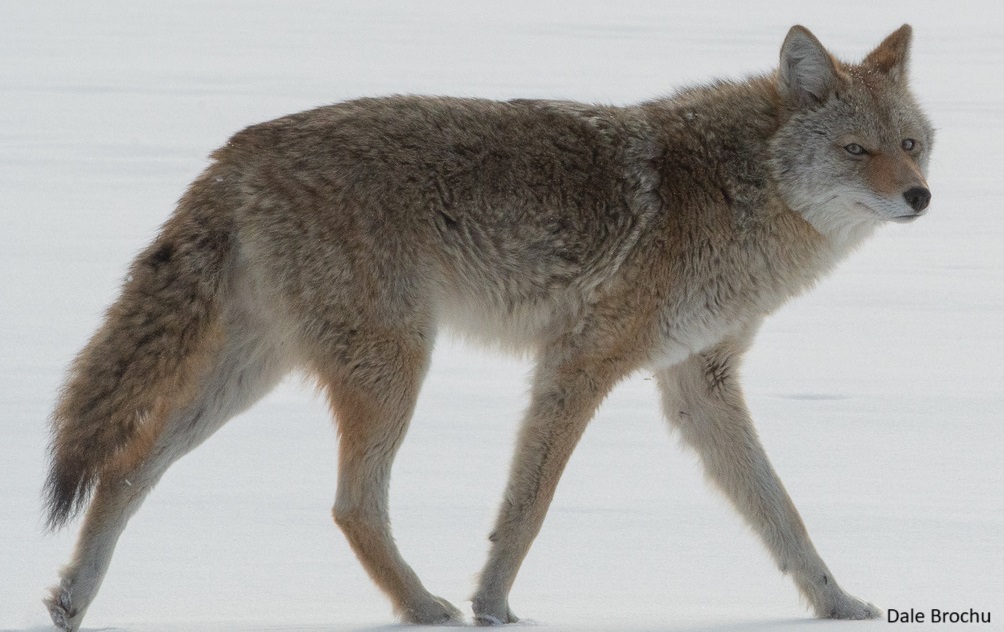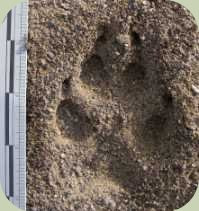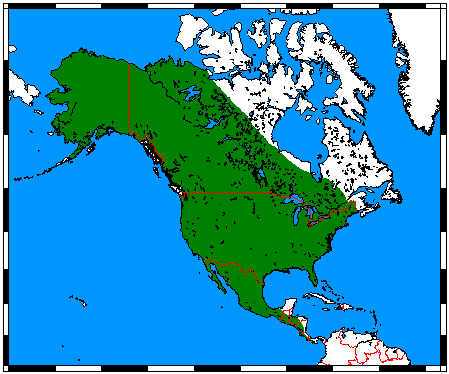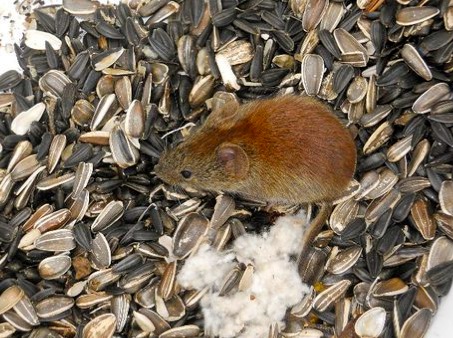
Coyotes are generalist carnivores that live throughout North America
The Coyote (Canis latrans)
The coyote is the most wide-ranging wild canine in North America. Coyotes can live in so many areas because they are generalists. Due to this they can change what they eat and where they live more easily than other species. This versatility allows them to move into urban areas to benefit from the dense sources of food and lack of predators.
Coyotes are the top predators in cities. This means that they play an important role in maintaining healthy urban ecosystems by reducing the abundance of "pest" species such as mice, rabbits and grasshoppers. Unfortunately, coyotes that get too comfortable around people can become nuissances and cause serious problems. Knowing more about the ecology of coyotes can help us prevent coyote-human conflict and promote coexistence.
Appearance
Coyotes are medium-sized canines, weighing 9-16 kg and standing 120-150 cm tall. Their coloration can vary from gray-brown to yellow-gray, with a white/cream coloured belly and throat, and often a dark stripe on their back. Their bushy tail has a distinctive black tip, and is held low behind the legs. This trait distinguishes coyotes from wolves, which normally hold their tails straight out from the body or slightly higher.
Coyote tracks look similar to those of comparable-sized dogs but they differ in shape. Domestic dog tracks are round, while coyote tracks are more oval (longer and thinner) in shape with a distinctive X between the paw pads. When walking, coyotes leave tracks that tend to fall more closely in line whereas dog tracks zig-zag.
 |
 |
| Coyotes have yellow-gray coats, large triangular
ears, and hold their dark-tipped tails low |
Coyote track, showing elongate shape and X pattern in between the pads |
Behaviour and Reproduction
Coyotes are flexible in their social structure and can live as individuals, monogamous pairs, or in packs. Mated pairs of coyotes are typically monogamous over several seasons, but may not be monogamous for life. Pair formation happens in the winter and pups are born in the spring. The pups grow over the summer and may disperse from their parents come fall. Spring and early summer is the most active time for coyotes because they need to hunt more to feed their pups. An average litter is 6 pups but can vary from 1 to 19! Very large litters may stem from more than one female.
Coyote packs are typically smaller than wolf packs and tend to be made up of 4-6 individuals that include a mated pair and their offspring. A coyote pack or pair will defend a territory and its resources, particularly during the pup-rearing season. In cities, where food is abundant and the landscape is complex, home ranges are more likely to overlap.
Range Expansion

Current coyote range (green)
Over the past 200 years, the geographic range of coyotes has increased dramatically. Once present only in the American Midwest, coyotes now live throughout North America, from Panama to Alaska and from California to Newfoundland. This range expansion is thought to be mainly due to the removal of wolves during European settlement, and increased urbanization. Range expansion to the East resulted in changes in coyote appearance and behaviour. Eastern coyotes are larger and more aggressive than Western coyotes due to hybridization with wolves.
Coyote populations have been increasing in cities over the past 20 years. They now inhabit several cities including Los Angeles, Washington, Austin, Chicago, New York, Toronto, Vancouver, Calgary, and Edmonton.
Habitat
In the Midwest plains, coyotes historically inhabited grassland habitat. However, the generalist nature of coyotes allows them to exploit many other kinds of habitats in their expanding range, which extends from hot, dry plains in Southern California, to cold, snowy boreal forest in Northern Alberta.
Coyotes readily exploit areas with human development, possibly because of human-originating food sources such as garbage, fruit from ornamental plants, outdoor pets, and intentional feeding. Water from landscaping and irrigation may also attract coyotes in areas with dryer climates. Other species that thrive in human-dominated landscapes -- mice, rabbits, and pigeons -- also provide a ready food source for urban coyotes.

Red-backed Vole
Diet
Coyotes are opportunistic carnivores, meaning that they will hunt prey but also eat anything they find. They are not strict carnivores and will also eat fruit and insects. Common prey of coyotes includes mice, rats, voles, shrews, rabbits and hares, deer fawns, muskrats, and other small mammals. Several studies suggest that coyotes in cities eat mostly natural foods such as small mammals and fruit, while supplementing their diet with human food, outdoor pets, and garbage.









